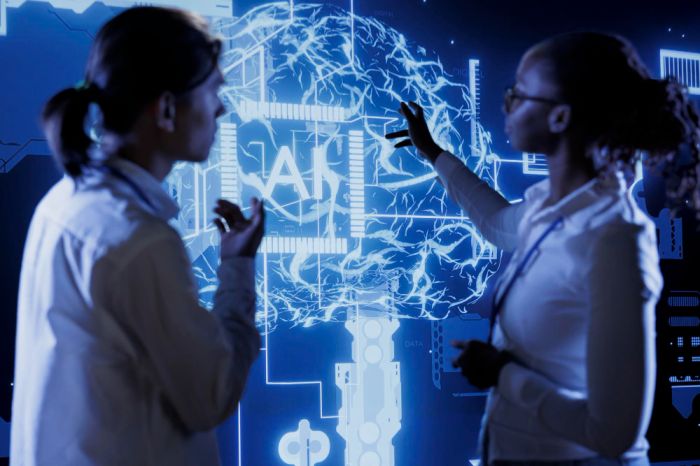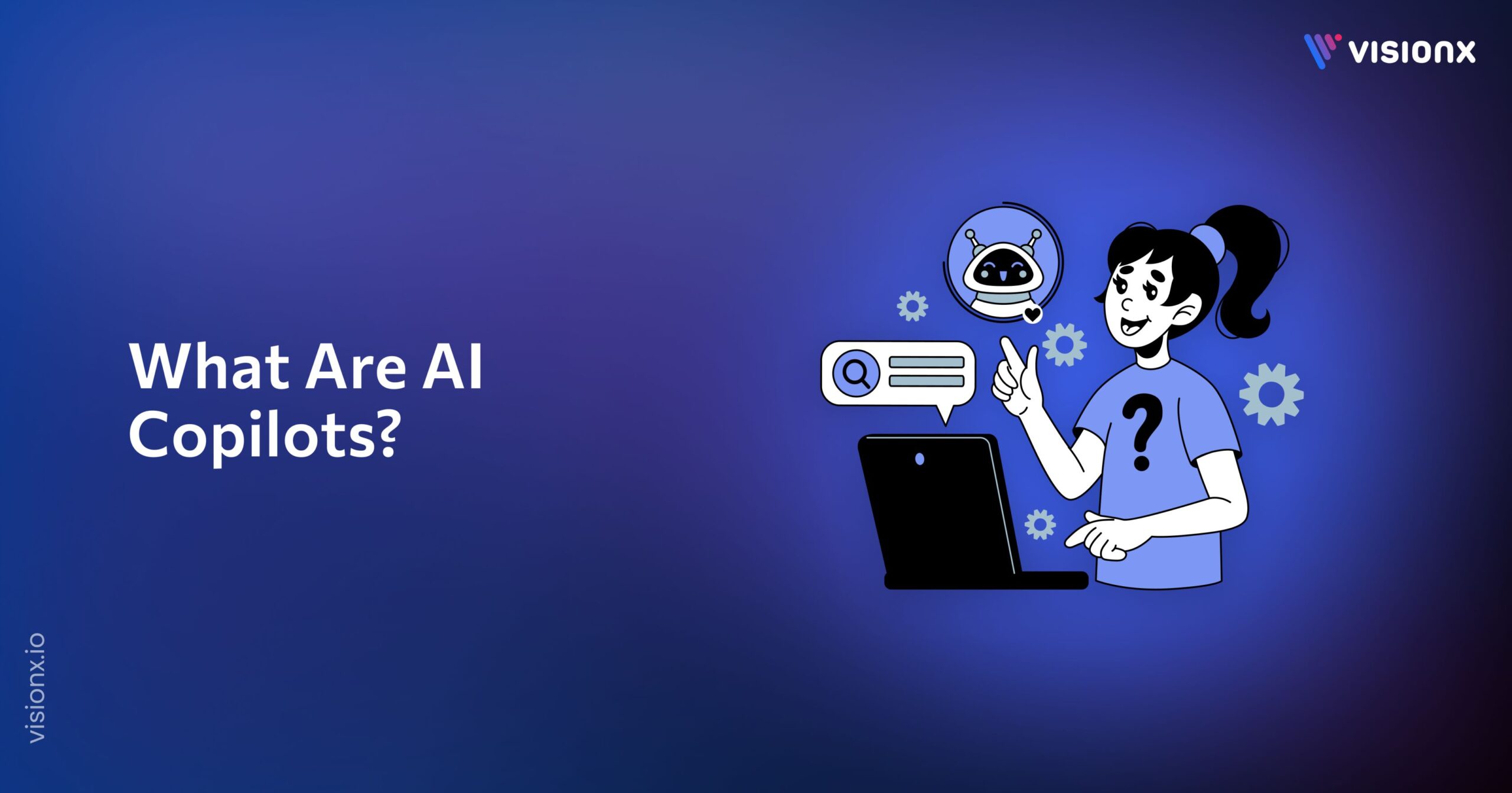Imagine a world where machines can think, learn, and even create like humans. This is the promise of Artificial Intelligence (AI), a field that has captured the imagination of scientists and tech enthusiasts alike. However, within this vast field, a paradigm shift is taking place that divides traditional AI from its more recent and powerful counterpart, generative AI.
Traditional artificial intelligence has long been the foundation of many technological developments, but it functions inside a limited ruleset, similar to a carefully designed robot that obeys preset commands.
Generative AI, on the other hand, takes a bold leap forward, empowering machines to learn, adapt, and even generate entirely new content, much like a curious child exploring the world.
Let’s discuss them individually and understand their features, applications, and differences.
What is Traditional AI?
Traditional AI, also known as symbolic AI or good old-fashioned AI (GOFAI), has been the dominant approach in the field for decades. It relies on explicitly programmed rules and algorithms to solve specific problems.
Characteristics of Traditional AI
- Rule-based systems: Traditional AI operates on predefined rules and logic, often derived from human experts in a particular domain.
- Expert knowledge: These systems are built upon specialist knowledge and hand-crafted rules, making them highly specialized.
- Well-defined tasks: Traditional AI thrives in tasks broken down into well-defined steps and rules.
Pros:
- Transparency and interpretability: Traditional AI systems based on rules and logic are generally more transparent and interpretable, as their decision-making processes are explicit and easily understood.
- High accuracy in specific tasks: Traditional AI excels in narrow, well-defined tasks where rules and heuristics can be clearly defined, leading to high accuracy and reliability.
- Deterministic behavior: Traditional AI systems typically exhibit deterministic behavior, making them more predictable and easier to control in certain applications.
- Easier validation and verification: Traditional AI’s rule-based nature makes validating and verifying the system’s behavior easier, which is crucial in safety-critical applications.
Cons:
- Limited flexibility and adaptability: Traditional AI systems struggle to adapt to new or changing environments, relying on predefined rules and expert knowledge, making them less flexible than generative AI development.
- Difficulty in handling ambiguity and complexity: Traditional AI can struggle with tasks that involve ambiguity, uncertainty, or complex patterns that are difficult to codify into explicit rules.
- Scalability challenges: As a problem becomes more complex, the number of rules required in traditional AI systems can grow exponentially, making them difficult to scale and maintain.
- Limited creativity and innovation: Traditional AI systems are constrained by the rules and knowledge provided by human experts, limiting their ability to generate truly novel or creative solutions.
What is Generative AI?
Generative AI represents a paradigm shift in artificial intelligence. It is based on self-learning models that can generate new content by identifying patterns in vast amounts of data rather than relying on predefined rules.
Characteristics of Generative AI
- Machine learning: Generative AI leverages advanced machine learning algorithms, particularly deep learning and neural networks.
- Data-driven: These models learn from large datasets, capturing complex patterns and relationships.
- Generative capabilities: Generative AI can produce human-like text, images, audio, or other forms of content.
- Handling ambiguity: These models excel at handling ambiguity and uncertainty, which is challenging for rule-based systems.
Pros:
- Versatility and adaptability: Generative AI models can tackle various tasks and adapt to new domains by learning from data, making them highly versatile and applicable across various industries.
- Creativity and innovation: Generative AI has the potential to augment and enhance human creativity by generating novel ideas, artworks, music, and literature, opening up new avenues for innovation.
- Data-driven insights: By processing vast amounts of data, generative AI can uncover complex patterns and insights that may be difficult for humans to discern, aiding in decision-making and scientific discovery.
- Natural interactions: Language models and conversational AI-enabled by generative AI can facilitate more natural and intuitive human-machine interactions.
Cons:
- Bias and fairness concerns: Generative AI models can perpetuate and amplify biases in the training data, raising concerns about fairness, discrimination, and the potential for harm.
- Lack of transparency and interpretability: The decision-making processes of generative AI models can be opaque and difficult to interpret, making it challenging to understand and explain their outputs.
- Potential for misuse: Generative AI technologies could be misused for malicious purposes, such as creating deepfakes, spreading disinformation, or engaging in cybercrime.
- Ethical and legal challenges: The rapid development of generative AI raises complex moral and legal questions around issues like intellectual property, privacy, and accountability.
Key Differences Between Traditional AI Vs. Generative AI
1. Rule-based vs. self-learning
Traditional AI relies on explicitly programmed rules and algorithms, making it a rule-based approach. Generative AI, on the other hand, is based on self-learning models that can identify patterns and relationships from data without the need for predefined rules.
2. Explicit programming vs. pattern recognition
Traditional AI systems are explicitly programmed with rules and logic derived from human experts, making them highly specialized. In contrast, generative AI models learn to recognize patterns and generate outputs by analyzing vast amounts of data, enabling them to tackle a broader range of tasks.
3. Specialized vs. broad applications
Traditional AI systems are designed to excel at specific, well-defined tasks within a particular domain, making them highly specialized. Generative AI models, however, can be applied to a broader range of applications across various domains thanks to their ability to learn from diverse datasets.
4. Interpretability and transparency
Traditional AI systems are relatively transparent and interpretable, as their decision-making processes are based on explicit rules and logic. However, generative AI models can be opaque and difficult to interpret, as their decisions are based on complex patterns learned from data, making it challenging to understand their inner workings.
Interpretability and transparency are critical considerations in generative AI systems, as they can perpetuate biases present in the training data and raise ethical concerns. Traditional AI systems, while more interpretable, may struggle with tasks that require handling ambiguity or dealing with situations that are not explicitly codified in their rules.
A key difference between these two approaches is the trade-off between interpretability and flexibility. Traditional AI offers transparency and specialization, while generative AI provides flexibility and can handle more complex, open-ended tasks at reduced interpretability.
Applications in Different Industries
| Aspect | Generative AI | Traditional AI |
| Content Creation | Art, music, text, and video generation | N/A |
| Personalization | Customized marketing, product designs | Personalized recommendations |
| Simulation | Realistic simulations for training models | Predictive modeling for simulations |
| Data Augmentation | Creating new data for training | N/A |
| Automation | Creating automated content like news | Process automation, data processing |
| Problem-Solving | Complex problem-solving with novel ideas | Rule-based problem solving |
Conclusion
The shift from traditional AI to generative AI represents a paradigm shift in the field, opening up new possibilities and applications while raising important ethical and practical considerations. As we navigate this new era, it is crucial to strike a balance between harnessing the potential of generative AI and addressing the challenges it presents, ensuring that these powerful technologies are developed and deployed responsibly for the betterment of society.


